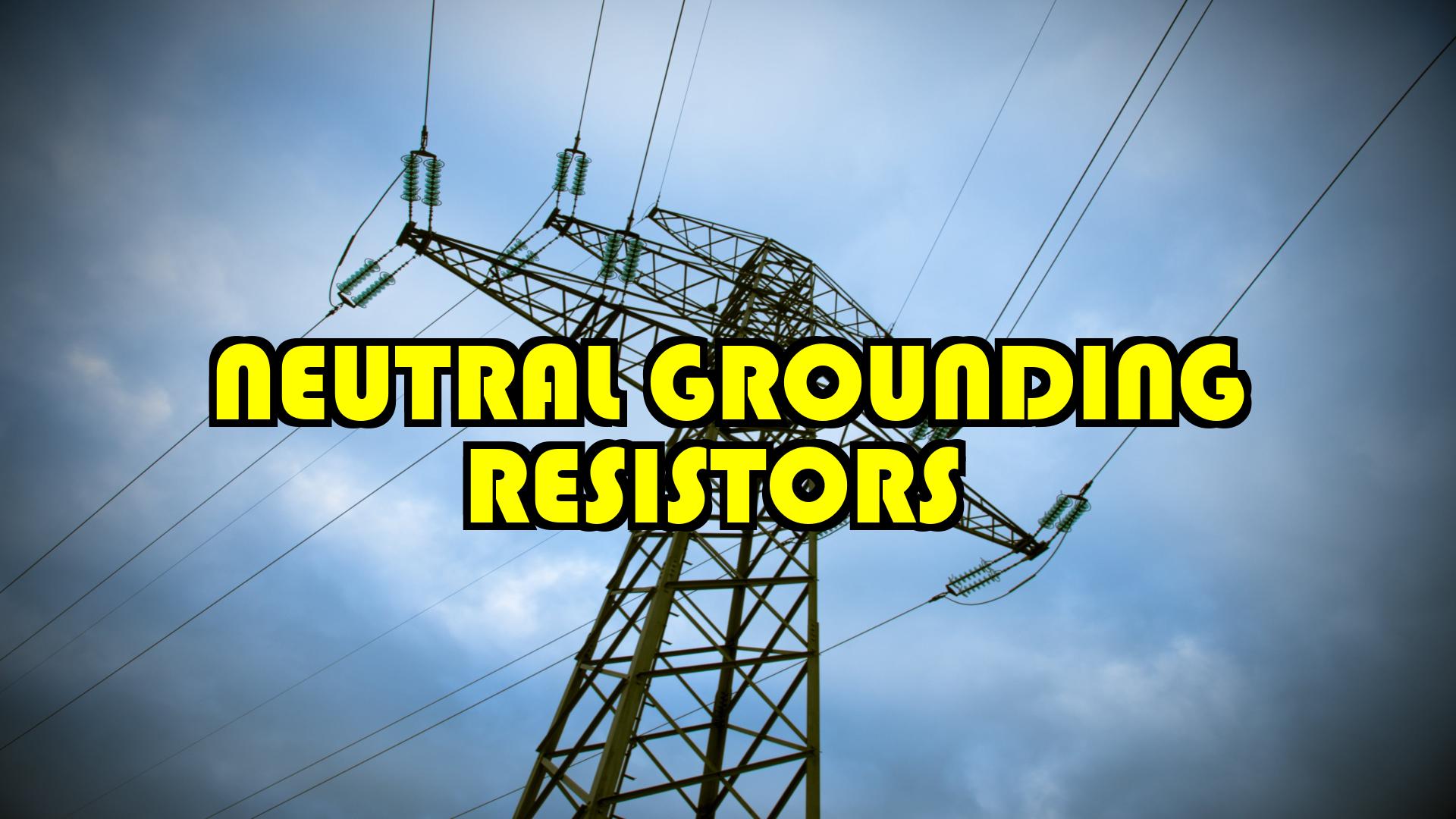Neutral Grounding Resistor: 5 Things You Need To Know!

The Neutral Grounding Resistor (NGR) is a critical element in electrical systems. Positioned between the neutral point of transformers or generators and the ground, its primary function is to limit fault currents during ground faults.
This role ensures stability, preventing extensive damage to equipment and enhancing overall system safety. The NGR operates by impeding the flow of excessive current, a measure that reduces downtime and maintenance costs.
Its significance lies in maintaining a delicate balance within electrical infrastructures, safeguarding equipment, and contributing to the reliability of power distribution networks.
Understanding Neutral Grounding Resistors
What are Neutral Grounding Resistors?
Neutral grounding resistors are extremely helpful in maintaining the stability of electrical systems. They are resistors connected between the neutral point of a transformer or generator and ground. The primary purpose is to limit the fault current that may flow through the neutral point during a ground fault.
Importance in Electrical Systems
The importance of neutral grounding resistors cannot be overstated. They help in controlling the magnitude of fault current, preventing extensive damage to equipment, and ensuring the safety of the overall system. This approach significantly reduces downtime and maintenance costs.
ALSO READ: Circuit Board Printer: Deep Explanation 2024
Types of Neutral Grounding Resistors
High Resistance Grounding
In high resistance grounding, a resistor limits the fault current to a level typically between 100 to 1000 amperes. This controlled current allows for quick detection of faults without causing substantial damage.
Low Resistance Grounding
Low resistance grounding involves resistors with lower values, usually less than 10 ohms. This method is effective in reducing transient overvoltages and limiting ground fault current to a moderate level.
Solidly Grounded Systems
In solidly grounded systems, the neutral is directly connected to ground without the use of resistors. While common, this approach doesn’t provide the level of fault current limitation seen in resistance grounding.
Applications of Neutral Grounding Resistors
Industrial Applications
Industries with sensitive equipment and processes benefit from neutral grounding resistors by ensuring a controlled environment even in the event of a fault. This is crucial for sectors such as manufacturing and petrochemicals.
Here are some key industrial applications of neutral grounding resistors:
-
Power Generation Plants:
- In power generation plants, particularly those using generators and transformers, neutral grounding resistors are employed to limit the fault current in the event of a ground fault. This helps in preventing extensive damage to equipment and ensures the safety of personnel.
-
Oil and Gas Industry:
- Neutral grounding resistors are used in oil and gas facilities, such as refineries and extraction sites, to provide a path for fault currents during ground faults. This limits the potential for equipment damage and ensures the safety of the entire system.
-
Chemical Plants:
- Industrial facilities in the chemical sector use neutral grounding resistors to mitigate the impact of ground faults. By limiting fault currents, these resistors contribute to the overall safety and reliability of electrical systems in chemical plants.
-
Mining Operations:
- Mining sites often involve heavy machinery and equipment that rely on electrical systems. Neutral grounding resistors are employed to control fault currents and prevent excessive damage in case of ground faults, enhancing the safety and reliability of mining operations.
-
Manufacturing Facilities:
- In manufacturing plants, where large-scale machinery and automation systems are prevalent, neutral grounding resistors help manage fault currents. This is crucial for preventing disruptions in production and ensuring the longevity of electrical equipment.
-
Renewable Energy Projects:
- Neutral grounding resistors are used in renewable energy projects, such as wind farms and solar power plants, to control fault currents and protect equipment. This is essential for maintaining the reliability of electrical systems and ensuring continuous energy generation.
-
Utilities and Power Distribution:
- Neutral grounding resistors are integral in power distribution networks and utilities. They assist in limiting fault currents, preventing equipment damage, and minimizing the impact of ground faults on the overall stability of the electrical grid.
-
Transportation Infrastructure:
- In facilities related to transportation, such as airports and railway systems, neutral grounding resistors contribute to the safety and reliability of electrical systems. They help control fault currents, reducing the risk of equipment damage and ensuring continuous operation.
-
Data Centers:
- Data centers, which rely heavily on uninterrupted power supplies, use neutral grounding resistors to enhance the reliability of their electrical systems. These resistors play a role in controlling fault currents and minimizing the risk of disruptions.
Power Distribution
In power distribution networks, neutral grounding resistors find application in preventing extensive damage during ground faults. This enhances the overall reliability of the power grid.
ALSO READ: Switching Power Supplies: Expert Guide And 9 Key Benefits
Installation and Maintenance
Proper Installation
The correct installation of neutral grounding resistors is most important. It involves a very careful assessment of the system’s requirements, making sure that the resistor is appropriately sized and located for optimal performance.
Here is the a guide for installation of neutral grounding resistor.
1. Safety First:
- Ensure all power sources are turned off before starting.
- Use appropriate personal protective equipment like insulated gloves and safety shoes etc.
2. Choose a Spot:
- Pick a good location for the resistor near the neutral point of the system.
- Consider accessibility and environmental factors.
Environmental Factors:
Ventilation:
Install the NGR in a location with adequate ventilation to dissipate heat effectively.
Protection from Weather:
Shield the NGR from environmental elements such as rain, snow, or direct sunlight by using an appropriate enclosure.
Temperature Considerations:
Ensure that the ambient temperature around the NGR remains within its specified operating range to prevent overheating.
Corrosion Resistance:
Choose materials and coatings that resist corrosion, especially in outdoor or corrosive environments.
Chemical Exposure:
If the environment involves exposure to chemicals, select materials that are resistant to corrosion or degradation.
Dust and Debris:
Minimize exposure to dust and debris by selecting a location with minimal airborne particles or implementing effective enclosure designs.
Humidity Control:
In humid environments, consider measures to control humidity levels around the NGR to prevent moisture-related issues.
Accessibility for Maintenance:
Ensure that environmental conditions do not hinder the ability to conduct routine maintenance on the NGR.
3. Mount Securely:
- Mounting a Neutral Grounding Resistor (NGR) involves securing it in a vertical position for efficient heat dissipation.
- Consider using heavy-duty brackets or mounting plates, along with robust screws or bolts, suitable for the surface where the NGR is installed.
- The hardware should be corrosion-resistant, especially if the environment poses such risks.
4. Connect to Neutral:
- Connect the resistor to the neutral point of the system securely.
5. Establish Grounding:
- Set up a strong grounding system for the resistor.
- Follow local grounding standards and codes.
6. Protect with an Enclosure:
- Shield the resistor with an enclosure to guard against environmental elements.
- Ensure proper ventilation for heat dissipation.
7. Wire It Right:
- Use appropriate wiring materials in line with electrical codes.
- Connect as per manufacturer’s specifications.
8. Monitoring System:
- Install a monitoring system to regularly check the resistor’s condition.
- Include alarms or sensors for timely alerts.
9. Test Before Powering Up:
- Test the resistor thoroughly before energizing the system.
- Confirm it operates within specified parameters.
10. Document Everything:
- Keep detailed records of the installation, including diagrams and specifications.
- Document any modifications or maintenance.
11. Train Personnel:
- Train operators on the purpose, functionality, and safety precautions.
- Ensure they know emergency procedures.
12. Check Compliance:
- Verify compliance with local and national electrical codes.
- Obtain necessary approvals or permits.
13. Routine Maintenance:
- Establish a regular maintenance schedule for inspections and tests.
- Address issues promptly.
14. Emergency Response:
- Develop and communicate emergency response procedures.
- Train personnel on the protocols.
Regular Maintenance Checks
Routine maintenance checks are essential to make sure the continued efficacy of neutral grounding resistors. This includes monitoring for any signs of wear, corrosion, or damage, and addressing any issues that may arise.
ALSO READ: 3 Best Circuit Board Cleaner for Superior Results
Advantages of Neutral Grounding Resistors
Equipment Protection
One of the primary advantages is the protection of equipment. Neutral grounding resistors reduce the risk of damage during ground faults, extending the life of transformers, generators, and other critical components.
System Reliability
By limiting fault currents, neutral grounding resistors contribute significantly to the overall reliability of the electrical system. This is crucial for industries where uninterrupted power is required.
Conclusion
The Neutral Grounding Resistor (NGR) stands out as a central component in electrical systems. Its main objective is to limit fault currents during ground faults, promoting stability and preventing extensive equipment damage.
By hindering excessive current flow, the NGR decreases downtime and controls maintenance expenses.
It carefully balances electrical infrastructures, ensures equipment protection, and strengthens the reliability of power distribution networks.





